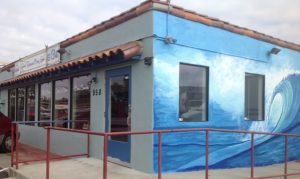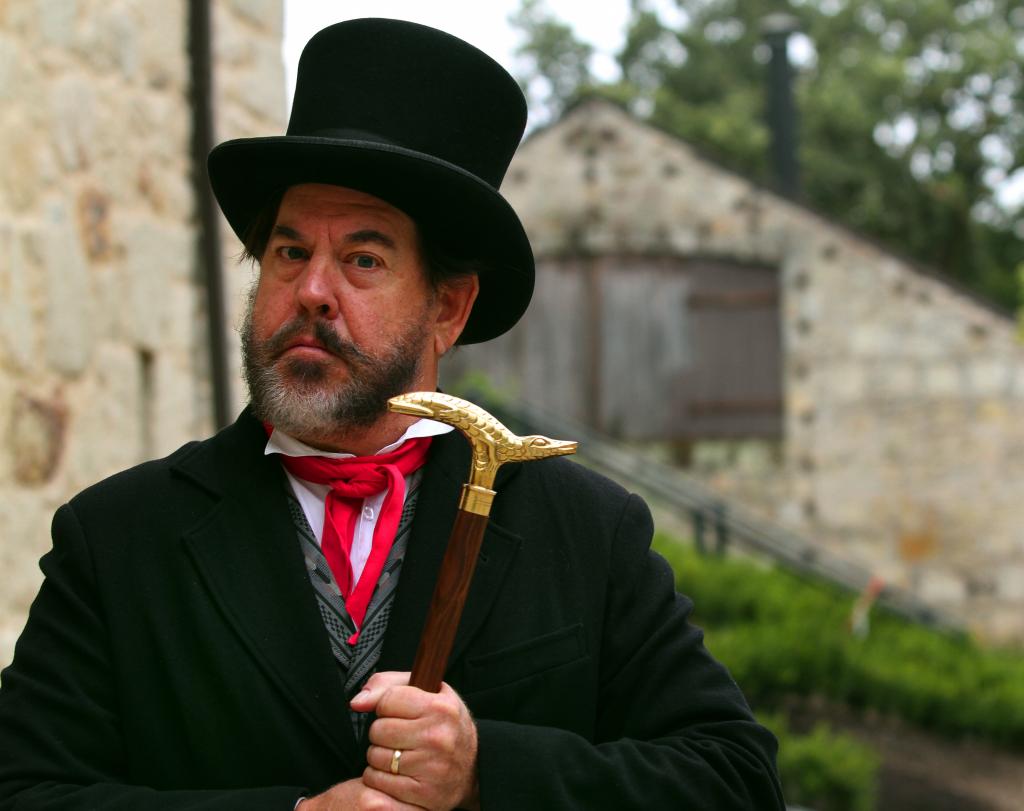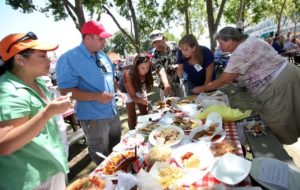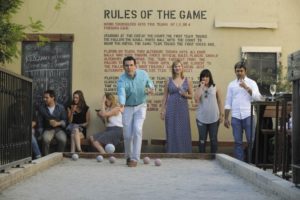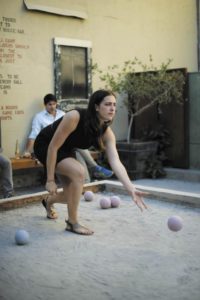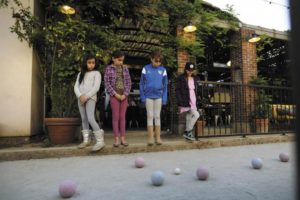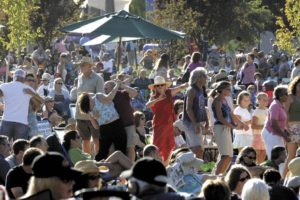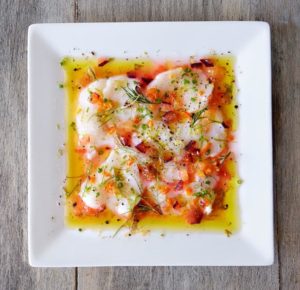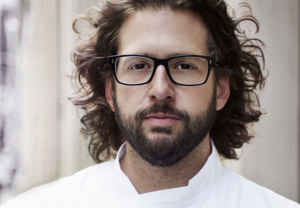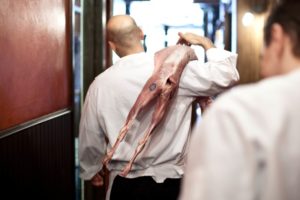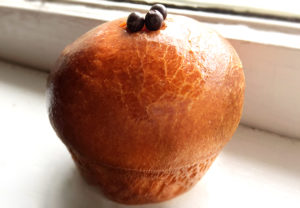Get ready for Outside Lands 2015 with this handy guide.
Oh. My. God. My favorite event of the year for eating, this three-day extravaganza is the culmination of Bay Area food, wine and beer. I’ll let it speak for itself. Stay tuned for lots more details as the date approaches.
 OUTSIDE LANDS ANNOUNCES THE 2015 FOOD & DRINK LINEUP
OUTSIDE LANDS ANNOUNCES THE 2015 FOOD & DRINK LINEUP
FEATURING
78 RESTAURANTS, 37 WINERIES AND 32 BREWERIES
WITH THE LIKES OF
BOURBON COKE FLOATS, DONUT CHEESEBURGERS, JAPANESE FRIED CHICKEN, PORKY FRIES, KORRITOS, GREEN JUICE, & FARM FRESH PRODUCE ON THE MENU
May 14, 2015 — San Francisco, CA – Outside Lands Music & ArtsFestival announces another mouthwatering food and drink lineup for its eighth annual edition. Given producers’ insatiable creativity and love for Northern Californian food and drink, Outside Lands offers over 200 menu options, found within six unique experiences: A Taste of the Bay Area, Wine Lands, Beer Lands, Choco Lands, Cheese Lands, and GastroMagic, which was introduced in 2014 as a fully programmed stage devoted to fantastical culinary entertainment. Outside Lands will once again take place in San Francisco’s historic Golden Gate Park August 7-9, 2015. A limited number of Single Day, Friday VIP tickets are still on sale via www.SFOutsideLands.com.
A Taste of the Bay Area
The food wonderland that is A Taste of the Bay Area is folded directly into the Outside Lands experience, allowing festival-goers to catch performances like Elton John, Mumford and Sons and The Black Keys, while also choosing from 78 restaurants, food trucks and food carts, 12 of which are new. This year, the three-star, classic Cal-Ital restaurant Delfina joins A Taste of the Bay Area, as does Russian Hill hot spot Stones Throw, the modern and Mexico City inspired La Urbana, chef-driven sandwiches from Liza Shaw and Merigan Sub Shop, coffee masters Sightglass Coffee, and Indian street food devotees Raj + Singh, to name a few. San Francisco all-star chef and restaurateur Michael Mina will foray into Outside Lands’ VIP experience with Michael Mina’s Tailgate.
Beer Lands
A towering beer mug reading “Ye Ole Beer Lands,” beckons brew lovers into Beer Lands. In exciting news, this year, Beer Lands will include a food experience. Leading the way for this new addition will be The Monk’s Kettle. This pioneer in the gastropub movement will be serving the perfect salty companions to chilled ales – pretzel knots and sausages in a pretzel bun. As always, Dave McLean, Owner of San Francisco’s Magnolia Brewing Company and Alembic Bar, will curate the Beer Lands lineup. Appropriately, McLean fell in love with Northern California beers while pairing them with live music (Grateful Dead concerts to be exact), and he now makes some of the best beer in San Francisco. In its fourth year, Beer Lands gathers 32 breweries, hailing from San Francisco, Napa, Sonoma, Half Moon Bay and Berkeley, that epitomize Northern California’s powerful craft beer culture. Six welcome newcomers to Beer Lands 2015 include two urban, small-batch breweries that launched just this past year, Local Brewing Co. and Fieldwork, as well as HenHouse, Half Moon Bay, Napa Smith and St. Florian’s. One of the country’s foremost craft breweries, Sierra Nevada Brewing Co., will also return to Beer Lands. Sierra Nevada’s Beer Ambassador Terence Sullivan will bring Beer Camp back to the Hellman Hollow Field and will feature Sierra Nevada’s special festival brew, the Outside Lands Saison, on tap from the brewery’s signature solar-powered trailer.
Wine Lands
Unlike any other music festival experience, Outside Lands offers Wine Lands, and the chance to discover 37 top regional winemakers pouring more than 120 wines, as led by the award-wining wine expert, Peter Eastlake. UnderWine Lands’ornate tent, complete with chandelier lights inspired by grapevines, guests can pass through for the perfect wine for their next show, or can linger to chat with winemakers about everything from harvest to biodynamic practices to wine pairings. Wine Lands’ outdoor Courtyard offers picnic tables and wine barrels to post up at, as well as a 1920s vintage sink with wine on tap. Wine Lands sees 11 new winemakers this year. Several exciting newcomers include the iconic Chateau Montelena, Buena Vista Winery and Vineyards – the oldest winery in Sonoma dating back to 1857, and CrossBarn by Paul Hobbs, known for its commitment to sustainable winemaking. Two urban wineries join the bill with Bluxome Street Winery in San Francisco and Dashe Cellars from Oakland. Welcoming the Pacific Northwest at large, Wine Lands will also see three Oregon makers this year: Mouton Noir, Union Wine Co.,and SakéOne.
Choco Lands
Since there is nothing better than ending a meal at Outside Lands in an enchanting and decked-out forest full of rich, sugary and locally made desserts, Choco Lands returns. Guittard Chocolate Company, the oldest, continuously family-run chocolate company in the United States will be back to serve Melted Chocolate Bars, as will dessert veterans Sharona’s Chocolate Shop with Chocolate Dipped Brownies, Chocolate Dipped Peanut Butter Cups, and Chocolate Dipped S’mores, Candybar Dessert Lounge with Hot Chocolate to beat the August chill, Kara’s Cupcakes with Artisan Cupcakes and Epic Cookies with Chocolate Crackled Cookies, White Chocolate Macadamia Cookies and Two Percent Milk for dunking.
Cheese Lands
Now in its third year, Cheese Lands will be curated by Thalassa Skinner of Culture, America’s magazine for cheese lovers, in partnership with Napa Valley’s Long Meadow Ranch. Cheese Lands will feature expansive cheese and charcuterie selections where artisan producers will engage in educational discussions about the best of the Bay Area’s cheese.
GastroMagic
GastroMagic debuted at Outside Lands in 2014 as a fully programmed stage devoted to fantastical culinary entertainment. It will return to Outside Lands in 2015. Stay tuned for its lineup and programming.
A Portion of the 2015 Outside Lands Menu is below
* subject to change
All new vendors are marked by (new)
4505 Meats – Cheeseburgers and Chicharrones
Alicia’s Tamales Los Mayas – Tamales, Arroz con Leche
AQ – Sweet, Spicy and Shroomy Waffles
Azalina’s – Peanut Tofu Nachos, Chicken Curry Nachos
Beast and the Hare – Texas Style Baked Potatoes
Big Chef Tom’s Belly Burgers – Pork Belly Burgers, Crinkle Cut Cheese Fries
Charles Chocolates – Gourmet S’mores, Brownie Ice Cream Sundaes
Chino – Lumpia, Pork Fried Rice
Curry Up Now – Sexy Fries, Deconstructed Samosas
Delessio Market & Bakery – Thai Chicken Sandwiches, Kale Salads, Rabanada
Delfina -Meatball Subs with Provolone and Tomato (new)
Earthly Delights – Philly Cheesesteaks, Cajun Chicken Sandwiches
El Huarache Loco – Huaraches, Gorditas, Quesadillas
Endless Summer Sweets – Gourmet Funnel Cakes, Hand-dipped Corn Dogs
Escape from New York Pizza – Pesto, Roasted Garlic and Potato Pizza Slices
Event Specialists – Cinnamon Sugar Churros, Giant Soft Pretzels
Freshroll Vietnamese Rolls & Bowls – Vietnamese Sandwiches, Taro Chips
Full Belly Farm – An Outside Lands Farmers Market
Glaze Teriyaki – Teriyaki Bowls, Gyoza, Shishito Peppers
Humphry Slocombe Ice Cream – Secret Breakfast Ice Cream, Bourbon Coke Floats
Il Cane Rosso – Olive Oil Fried Egg Sandwiches, Griddled French Toast
La Urbana -Mexican Chorizo Dogs, Bean Soup (new)
Little Skillet – Chicken & Waffles, Mac & Cheese, Fresh Watermelon
Living Greens Juice – Fresh Juices, Thai Coconuts, Hot Detox Tea, Hot Mulled Cider
Long Meadow Ranch – Cheese and Charcuterie Plates (in Cheese Lands)
Loving Cup – Madagascar Vanilla Bean Rice Pudding, Frozen Yogurt Sandwiches
Lucca Foods – BBQ Pulled Pork, Rice Krispy Treats
Merigan Sub Shop – Eggplant Parm Subs, Italian Shaved Ice (new)
Michael Mina’s Tailgate- Burgers and BBQ (new; in VIP)
Namu Street Food – Mushroom Udon, Pork Tonkotsu
Nojo – Spicy Japanese Style Tater Tots
Nombe – Ramenburgers, JFC (Japanese Fried Chicken)
Pacific Catch – Hawaiian Ahi Poke, Fish & Chips, Sweet Potato Fries
Pica Pica Arepa Kitchen – Arepas, Sweet Plantains, Yuca Fries
Precita Park Café – Deep Fried Organic Donuts, Equator Coffee
Proposition Chicken – Fried, Flipped, Fake Chicken Sandwiches
Raj + Singh – Chicken Tikka Masala Naan Wraps, Veggie Korma Rice Bowls (new)
Rich Table – Dried Porcini Doughnuts
Rocko’s Ice Cream Tacos – Ice Cream Tacos, Frozen Bananas (new)
Rosamunde Sausage Grill – Beer Sausages, Chicken Cherry Sausages, Vegan Apple Sage Sausages
Sababa – Falafels, Cardamom Coffee Slushies (new)
Sabores Del Sur – Award-winning Alfajores
Sataysfied – Chicken Satays, Mie Tek Tek Fried Noodles
Sightglass Coffee – Individually Prepared Coffees, Vanilla Iced Cold Brew (new)
Southpaw BBQ & Southern Cooking – Smoked Brisket Sandwiches, Collard Greens
Spicy Pie – Pizza Slices, Cookie Pie
Spin City Coffee – Black Jet Pastries, Dynamo Donuts, Shakedown Ice Cream, and
Blue Bottle Coffee
Split Pea Seduction – Farm to Fork Soups, Salads, and Sandwiches
Sprogs – Rice Scooters (new)
Stones Throw – Chicken Parm Sandwiches (new)
Straw – “The Ringmaster” Donut Cheeseburgers
Sugar & Spun – Freshly Spun Cotton Candy Bouquets
Suite Foods Waffle Shop – Maple Bacon Waffles stuffed with Fried Chicken
Tacolicious – Shot-and-a-beer Braised Chicken Tacos, Veggie Tacos, Baja Style Fried Fish Tacos
The American Grilled Cheese Kitchen – Classic Grilled Cheese Sandwiches and Smoky Tomato Soup
The Butcher’s Daughter – Spicy Cheddar Brats, Knackwurst, Chicken Brats, Pâtés
The Creme Brulee Cart – Gourmet Creme Brulees (new)
The Little Chihuahua – Breakfast Burritos, Plantain & Black Bean Burritos
and Fajita Burritos
The Monk’s Kettle – Pretzel Knots, Sausages in a Pretzel Bun (new; in Beer Lands)
The Pizza Place – Cheese, Pepperoni and Vegan Personal Pizzas
Three Babes Bakeshop – Chicken Pot Pie, Peach Pie, Hot Apple Cider
Three Twins Ice Cream – Brownie Batter Chunk Ice Cream, Raspberry Sorbet
Up & Under Pub and Grill – Waffle Fries with Crazy Toppings
Wise Sons Deli – Pastrami Sandwiches, Bagels and Cream Cheese
Woodhouse Fish Co. – Oysters, Maine Lobster Rolls, and
New England Clam Chowder
Food Trucks 2015
Bacon Bacon – BBQ Bacon Burritos, Porky Fries
Del Popolo – Margherita Pizzas
Señor Sisig – Sisig Burritos and Tacos
Seoul on Wheels – Korritos, Rice Plates
The Chairman Truck – Pork Belly, Pork Shoulder, Chicken and Tofu Buns
The Rib Whip – BBQ Bowls & Sandwiches
Those Fabulous Frickle Brothers – Fabulous Frickles, Fried Green Tomatoes, and
Cold Kosher Dills
Choco Lands 2015
Candybar Dessert Lounge – Chocolate French Macarons, Homemade Hot Chocolate
Epic Cookies – Chocolate Krackle Cookies, White Chocolate Macadamia Cookies, Chocolate Chunk Cookies, and 2% Milk
Guittard Chocolate Company – Melted Chocolate Bars
Kara’s Cupcakes – Cupcakes, Karamel Corn, Artisan Cookies
Sharona’s Chocolate Shop – Chocolate-Dipped Peanut Butter Cups, Chocolate-Dipped S’mores, and Chocolate-Dipped Brownies
Beer Lands 2015
21st Amendment Brewery
Ace Cider
Almanac Beer Company
Anchor Brewing Company
Anderson Valley Brewing
Bear Republic Brewing Company
Bulmers Cider Company
Calicraft Brewing Co.
Drake’s Brewing Company
Faction Brewing
Fieldwork Brewing Company (new)
Firestone Walker Brewing Co.
Fort Point Beer Company
Golden Road Brewing
Half Moon Bay Brewery
(new)
HenHouse Brewing Company (new)
High Water Brewing
Iron Springs Brewery
Linden Street Brewery
Local Brewing Co.
(new)
Lost Coast Brewery
Mad River Brewing Company
Magnolia Brewing Company
Mendocino Brewing Company
Napa Smith Brewery
(new)
North Coast Brewing Company
Sierra Nevada Brewing Co.
Social Kitchen & Brewery
Sonoma Cider
Speakeasy Ales & Lagers
St. Florian’s Brewery
(new)
Triple Voodoo Brewing Company
Wine Lands 2015
AP Vin
Banshee
Bluxome Street Winery (new)
Broc Cellars
Buena Vista (new)
Calder Wine Co.
Chateau Montelena (new)
Claypool Cellars
CrossBarn by Paul Hobbs (new)
Dashe Cellars (new)
Ghost Pines
Hess Collection
Hobo Wine Co.
Idell Family Vineyard
Idelwild / Ryme / Jolie Laide (new)
Jaffurs Wine Cellars (new)
Jamieson Ranch Winery (new)
Long Meadow Ranch
Medlock Ames
Menage a Trois
Mouton Noir
Navarro
Pellegrini Wine Company
Preston Farm and Winery
Prisoner Wine Company
Qupe-Verdad
Red Car
Ridge Vineyards
Robert Sinskey Vineyards
SakéOne
Scharffenberger Cellars
Scribe
Swanson (new)
Tin Barn (new)
Turley Wine Cellars
Union Wine Co. (new)
Wind Gap
The confirmed Outside Lands 2015 music lineup is below:
Elton John
Mumford & Sons
The Black Keys
Sam Smith
Kendrick Lamar
Wilco
Axwell & Ingrosso
Tame Impala
D’Angelo and The Vanguard
St. Vincent
Porter Robinson
Ben Harper & The Innocent Criminals
Billy Idol
G-Eazy
Hot Chip
Slightly Stoopid
Caribou
Milky Chance
Chet Faker
The Devil Makes Three
Nate Ruess
ODESZA
First Aid Kit
Toro Y Moi
RL Grime
Lake Street Dive
Mac DeMarco
George Ezra
Lindsey Stirling
Iration
Angus & Julia Stone
DJ Mustard
St. Paul and The Broken Bones
Glass Animals
Laura Marling
James Bay
Green Velvet & Claude VonStroke: Get Real
Django Django
Classixx
Karl Denson’s Tiny Universe
Sky Ferreira
Leon Bridges
Robert DeLong
Unknown Mortal Orchestra
SZA
Allah-Las
Shakey Graves
Dan Deacon
Benjamin Booker
MisterWives
Langhorne Slim & The Law
Ryn Weaver
Broods
Hurray for the Riff Raff
Giraffage
GIVERS
Alvvays
Twin Peaks
The Family Crest
The Revivalists
METZ
Strand of Oaks
Speedy Ortiz
Fantastic Negrito
DMA’s
Natalie Prass
Alex Bleeker & The Freaks
The Sam Chase
Devon Baldwin
The Tropics
More announcements will be made in the coming weeks; for updates and more information, check out www.sfoutsidelands.com and follow Outside Lands on Facebook: Outside Lands Music Festival, Twitter: @sfoutsidelands and Instagram: outside_lands



